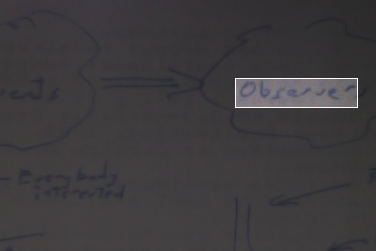I skimmed the book Control through Communication. The book is about firm size. As we learned to manage information and communication at larger and larger scales the size of firms grew. Which is all fine, but the aspect of the book I enjoyed was the schemes and gadgets. Mostly the gadgets. At one point the boss managed his communication with grid of pigeon holes, one for each day. This scheme evolved; getting larger and larger until you could buy single unfolding desks, the size of a modern SUV, with hundreds of pigeon holes.
This picture shows the Dupont executive chart room. Using charts to illustrate the status of the firm’s many operation was, at some point in time, an innovation. About the same time Dupont started to use crude modern financial modeling, ROI and such. Somebody at Dupont was sufficently enthusiastic about charts to have this marvalous contraption built.
The executives would sit in those chairs shown in the foreground, and as each portion of the operations came up for review their assistants would slide forth the handful of charts illustrating what’s happening with that. It reminds me of a dry cleaners.
On theme in the book is how the meer idea that information should flow up and down the corporate hierarchy was innovative. And then that these communications would become formalized was yet another. I don’t know if the word innovation, rather than say enivitable, is the right term. The book disappointed me, but then I only skimmed it, beacuse it doesn’t really engage with the two questions I’m interested in.
First how did firms manage the puzzle of how to negotiate out what should be communicated and how hierarchtical that communication ought to be. It was interesting to realized that the the practice of highly hierarchtical communication may well have emerge almost entirely because that was what the technology could support. The complexity of printing and it’s scaling characteristics meant that the central office could execute communication acts that the periphery could not. If so the xerox machine must have created a bloom of lateral communication.
Second how much did this wipe out smaller businesses. Was this really a major driver to the condensation where single large firms displaced smaller firms. The roll up that happened in the telephone industry reprised in multiple other industries; but it’s a provocative thought that it happened for almost identical reasons: communication based network effects.
These two questions interact in some cases. When railroads merged the operational rules of the dominate player would have to displace those of the weaker one, and in many case the stronger one had more effective communication and control schemes.
Looking at that picture I’m reminded of a reporting framework that a new senior manager once deployed into a firm I was working at. The frame work was extremely standardized, N slides, M panels in each slide, with rules about what was expected in each slot. It wasn’t a bad scheme, and it certainly made his job much more efficent. Which was good because it allowed him to cut thru a lot of middle management and see deeper into the organization. But yet, it tended to eliminate from discussion anything that didn’t fit. If the slide lacked a slot, say for employee morale, then an issue was invisble. To exagerate it was as if he was looking at the company thru a straw. I’d say it created a puzzle for those who wanted to signal something up stream. You had to get it into the straw’s narrow view. I suspect his scheme was the direct decendent of that chart room.





